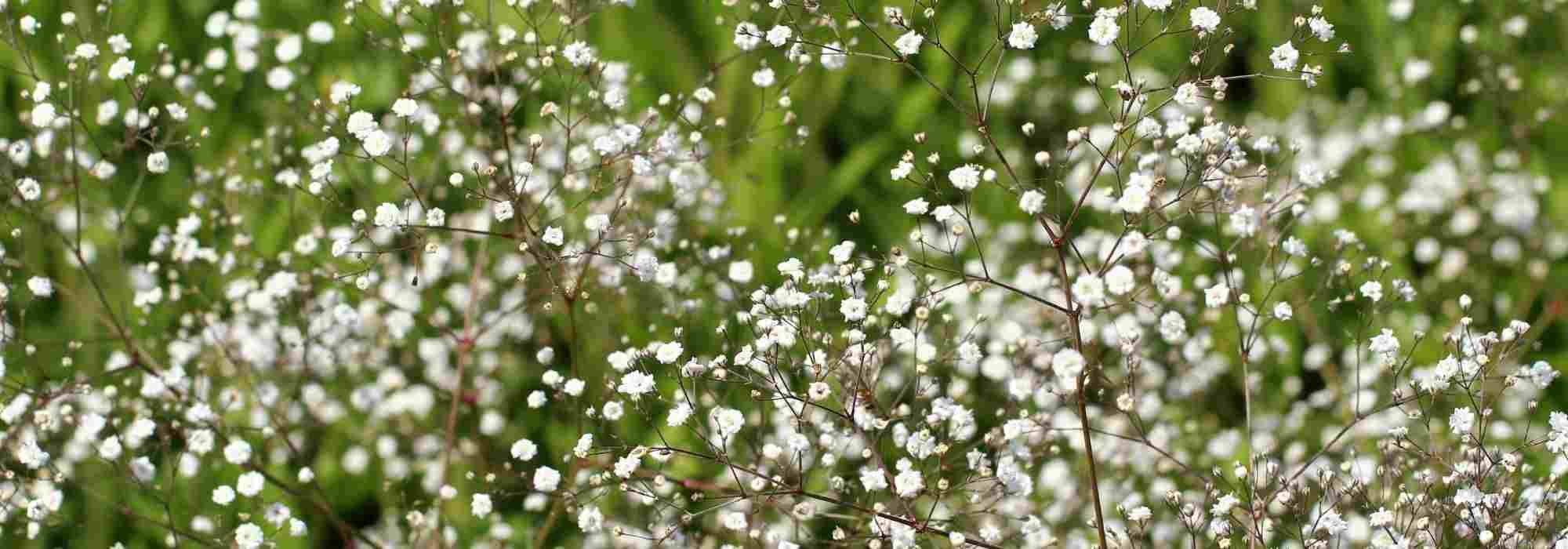
Growing gypsophila in pots
For a chic and elegant touch
Contents
Often associated with roses in a bouquet, gypsophila forms airy clouds of very small white and sometimes pink star-shaped flowers that are incredibly light. During its flowering period, from June to August, it adds a touch of elegance to a flower bed in a garden or in a pot on a terrace. In addition to being chic, it is robust, easy to grow, and adapts well to all soils, provided they are dry and well-drained.
Discover all our tips for starting to grow gypsophila in pots!
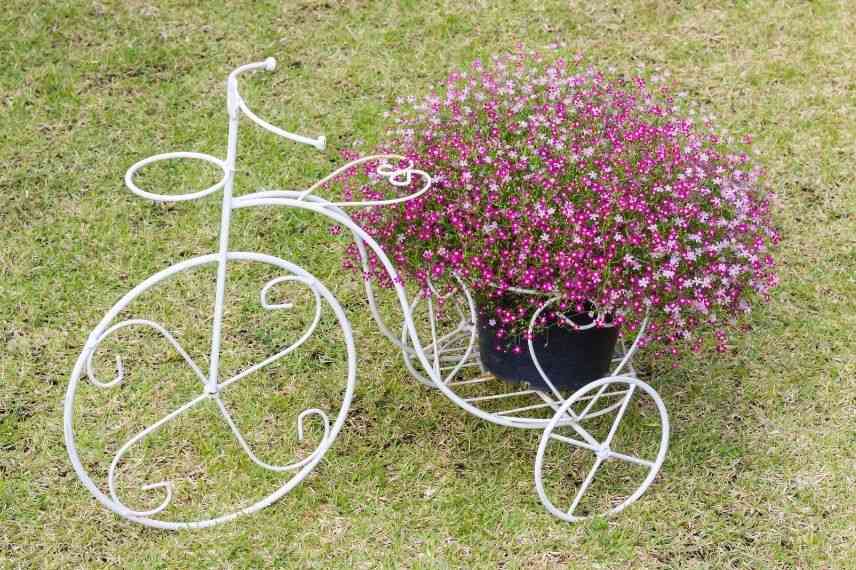
Which varieties of gypsophila to choose?
Gypsophila naturally thrives in dry, calcareous environments, such as rock gardens and mountains, with a preference for regions of the Mediterranean Basin and Central Asia. It is an easy plant to grow, well resistant to drought and frost down to -15°C. Gypsophila comprises around a hundred species, which can be either perennial plants or annuals. Depending on the species, it can measure between 10 cm and 1 metre, from the more creeping varieties like Gypsophila repens to the taller ones like Gypsophila paniculata.
For pot cultivation, it is better to favour creeping or annual species, as the perennials and taller species require a greater depth of soil.
- Among the most commonly cultivated creeping species, you can choose Gypsophila repens, which grows up to a height of 20 cm, white like Gypsophila repens ‘Alba’, or pink like Gypsophila repens ‘Rosa Schönheit’. You can also opt for the small Gypsophila cerastioides, which only reaches 10 cm and forms a lovely little cushion of tiny white flowers veined with purple.
- Among the annual species, you might choose for example the Gypsophila elegans, white, reaching up to 45 cm and ideal for bouquets, or Gypsophila muralis (Wall Gypsophila).
Discover our complete range of gypsophilas.

Gypsophila repens ‘Alba’, Gypsophila repens ‘Rosa Schonheit’ with their very linear foliage and Gypsophila cerastioides with its rounded leaves
Read also
Gypsophila: planting and careWhat exposure?
Sunshine above all! To bloom, gypsophila needs to be exposed to full sun.
Discover other Gypsophila
View all →Available in 0 sizes
Available in 3 sizes
Available in 1 sizes
Available in 2 sizes
Available in 1 sizes
Available in 1 sizes
Available in 1 sizes
Available in 2 sizes
Available in 1 sizes
Available in 1 sizes
What type of pot to choose?
Gypsophila prefers dry soils and does not appreciate moisture, so use a clay pot, which allows water to evaporate more effectively. Choose a pot that is at least 50 cm wide and deep enough, as gypsophila likes to spread. It also has fragile roots and does not tolerate being disturbed well.
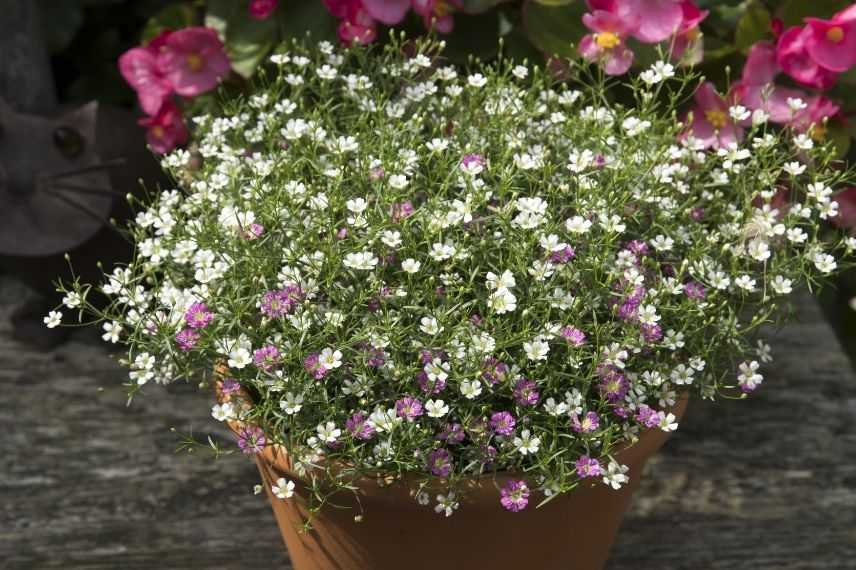
Gypsophila in a large clay pot
Read also
How to propagate baby's breath?What substrate to use?
Gypsophila needs a potting compost that is half compost and half sand or gravel.
When and how to plant it?
Plant the gypsophila preferably in March or April, outside of frost periods. Autumn planting is also possible, provided temperatures remain mild.
- Check that the bottom of the pot is well-drained and add a layer of gravel or sand to ensure the substrate is well-drained
- Then fill with draining substrate, leaving a deep enough hole in the middle to install the gypsophila
- Remove the plant from its pot and place it in the hole without breaking the root ball
- Cover the roots with soil, firming it around the base
- Then water the gypsophila without overdoing it
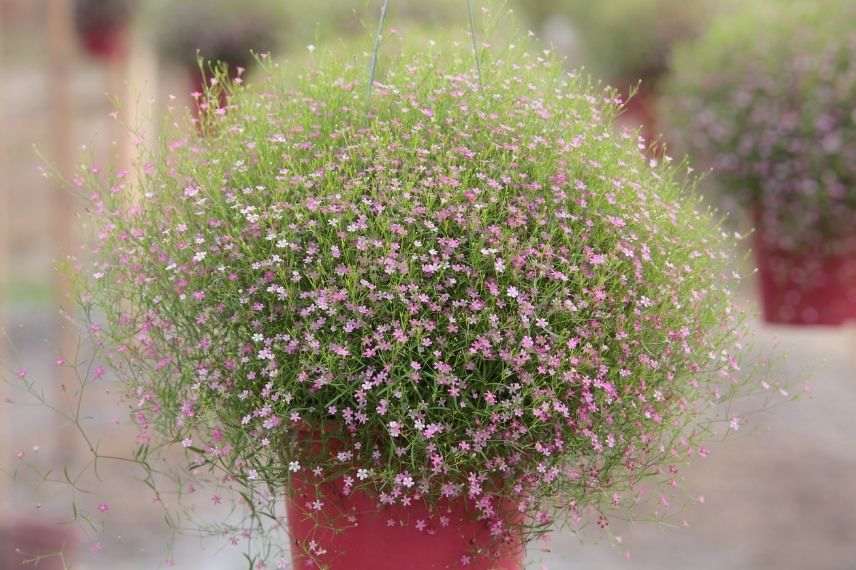
Gypsophila in suspension
How to care for it?
Watering
Water regularly during the first year, ensuring that the soil dries out between waterings. From the following year, you will only need to water in cases of severe drought.
Fertiliser
It is not necessary to apply fertiliser as the baby’s breath thrives in poor soils.
Staking
Some tall baby’s breath may need to be staked.
Pruning
Regularly remove faded flowers to encourage the appearance of new blooms. Creeping species do not require pruning.
Repotting
Baby’s breath has fragile roots and does not appreciate being disturbed. Repotting should therefore be done with great care or avoided altogether. Simply top-dress in spring.
Wintering
Baby’s breath is very hardy and can withstand temperatures down to –15°C. If temperatures in your area drop even lower in winter, bring the pot to a sheltered place in a greenhouse.
Diseases and pests
Baby’s breath is resilient and only fears excess moisture and overwatering, which can cause its roots to rot.
Another possible nuisance: young plants may be devoured by snails and slugs. If this happens, here is how to get rid of them.
For further reading
You can pair your pot of gypsophila with many colourful flowers to soften the hues and create a romantic atmosphere. Place your pot of gypsophila next to a rose bush with vibrant or pastel tones, for example.
Another idea is to position it near a rockery or by a low wall to give your display a touch of lightness.
- Subscribe!
- Contents
































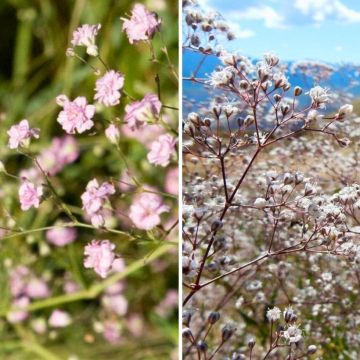
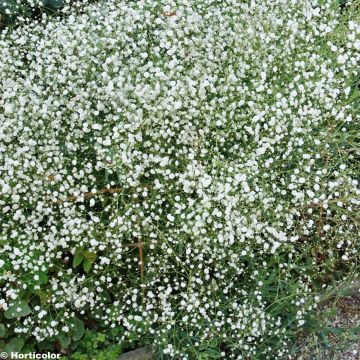
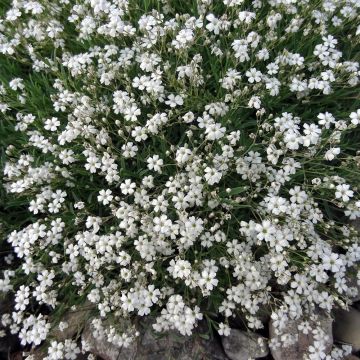
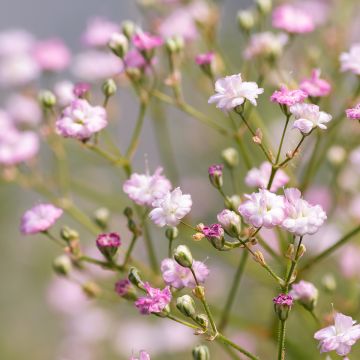
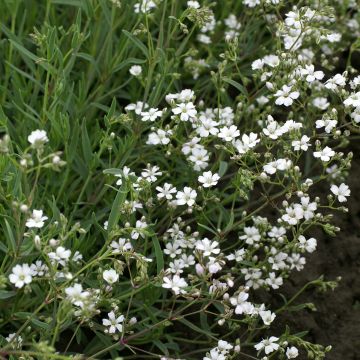

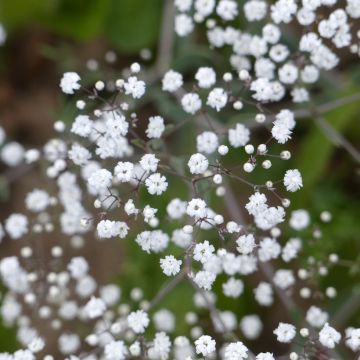
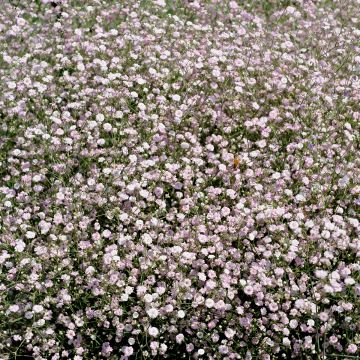
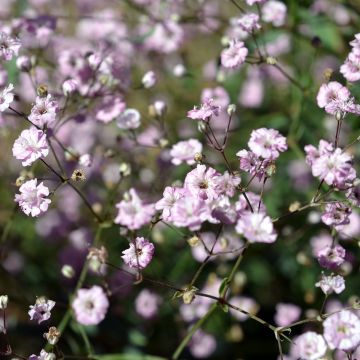
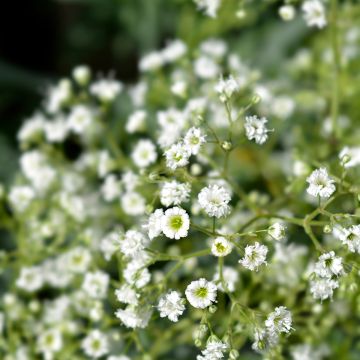
Comments